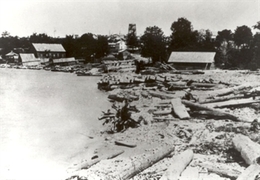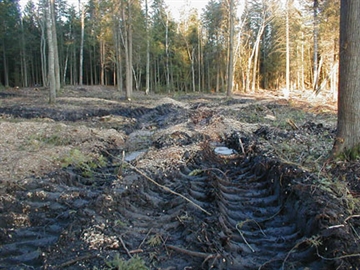Sparkling inland lakes, expansive forests, blue-ribbon trout streams, prairies, bogs, wildlife-rich wetlands, and miles of spectacular beaches … these features make the Great Lakes one of the most magnificent resources on Earth. This Great Lakes system is home to hundreds of thousands of plant, fish, and wildlife populations. Many of these species depend on near-shore habitat at some point in their life cycle—that is, they breed, grow, and/or live some or all of their life on the land or in the water along the shoreline of the big lakes and the connecting rivers, streams, and channels. These areas are greatly affected by human use – rivers dammed, wetlands drained and filled, forests pillaged, dynamic coastlines shackled with sheet pilings, watersheds paved, exotics introduced, and pollutants dumped. No comprehensive assessment of all that has been lost has ever been made. But when you consider the loss of commercial catches like the lake trout fishery, the loss of biodiversity (including extinctions), the lost value of the water quality, the lost flood control that millions of acres of drained wetlands could provide, the billions of dollars already spent on controlling exotic species such as sea lamprey, purple loosestrife, and zebra mussel, the billions of dollars already spent in cleaning up toxic hotspots (and the billions more to spend), the losses are staggering. Human activity contributes to habitat degradation and loss through agriculture, urban and industrial development, exotic species introduction, mining, nonpoint source pollution and sedimentation, recreation, air emissions, water discharges, and water-level management.
Habitat within the Great Lakes basin has been significantly altered following the arrival of European settlers, especially during the last 150 years. Nearly all of the existing forests have been cut at least once and 60% of our forest land has been lost to development. Only small remnants of other habitat types such as savannah or prairie remain. Much of the forest and prairie soils suited to agriculture have been plowed or intensively grazed. This, together with construction of dams and urbanization, has created vast changes in the plant and animal populations. Streams have been changed not only by direct physical disturbance, but by sedimentation and changes in runoff rates due to changing land use, and by increases in temperature caused by removal of shading vegetation.

Wetlands are a key category of habitat within the basin because of functions and values wetlands provide. Wetlands are known to be the most biologically productive ecosystems in the temperate regions of the earth. Their biological productivity rivals that of tropical rainforests and involves complex nutrient and energy cycles. Many wetland functions are a direct result of the biological activity that occurs in wetlands. Many natural wetlands have been filled in or drained for agriculture, urban uses, shoreline development, recreation, and resource extraction. More than ½ of the original wetlands and 2/3 of coastal wetlands in the Great Lakes Basin have been degraded, drained, or converted since pre-settlement times. Losses have been particularly high in the southern portions of the basin. It is estimated, for example, that between 70 and 80 percent of the original wetlands of Southern Ontario have been lost since European settlement, and losses in the U.S. portion of the basin range from 42 percent in Minnesota to 92 percent in Ohio. Coastal wetlands are considered the most ecologically important area in the Great Lakes and they are critical to the health of the Great Lakes. Providing fish and wildlife habitat, flood control, water quality protection – the loss of these wetlands are substantial.

Natural habitat is critical to the health the Great Lakes ecosystem which, in turn, is inextricably linked to the vitality of the regional economy and quality of life. This is prominently recognized in the Great Lakes Regional Collaboration Strategy to Restore and Protect the Great Lakes, as well as numerous other regional policy agreements. Throughout the Great Lakes Basin, critical habitat, including wetlands, is being protected and restored in an effort to combat the impacts of habitat loss. Habitat restoration–the manipulation of the physical, chemical, or biological characteristics of a site with the goal of returning self-sustaining natural or historic structure and functions to former or degraded habitat–offers great promise for reversing the trend of habitat loss and degradation, and is a crucial component of comprehensive ecosystem restoration, protection, and management.

